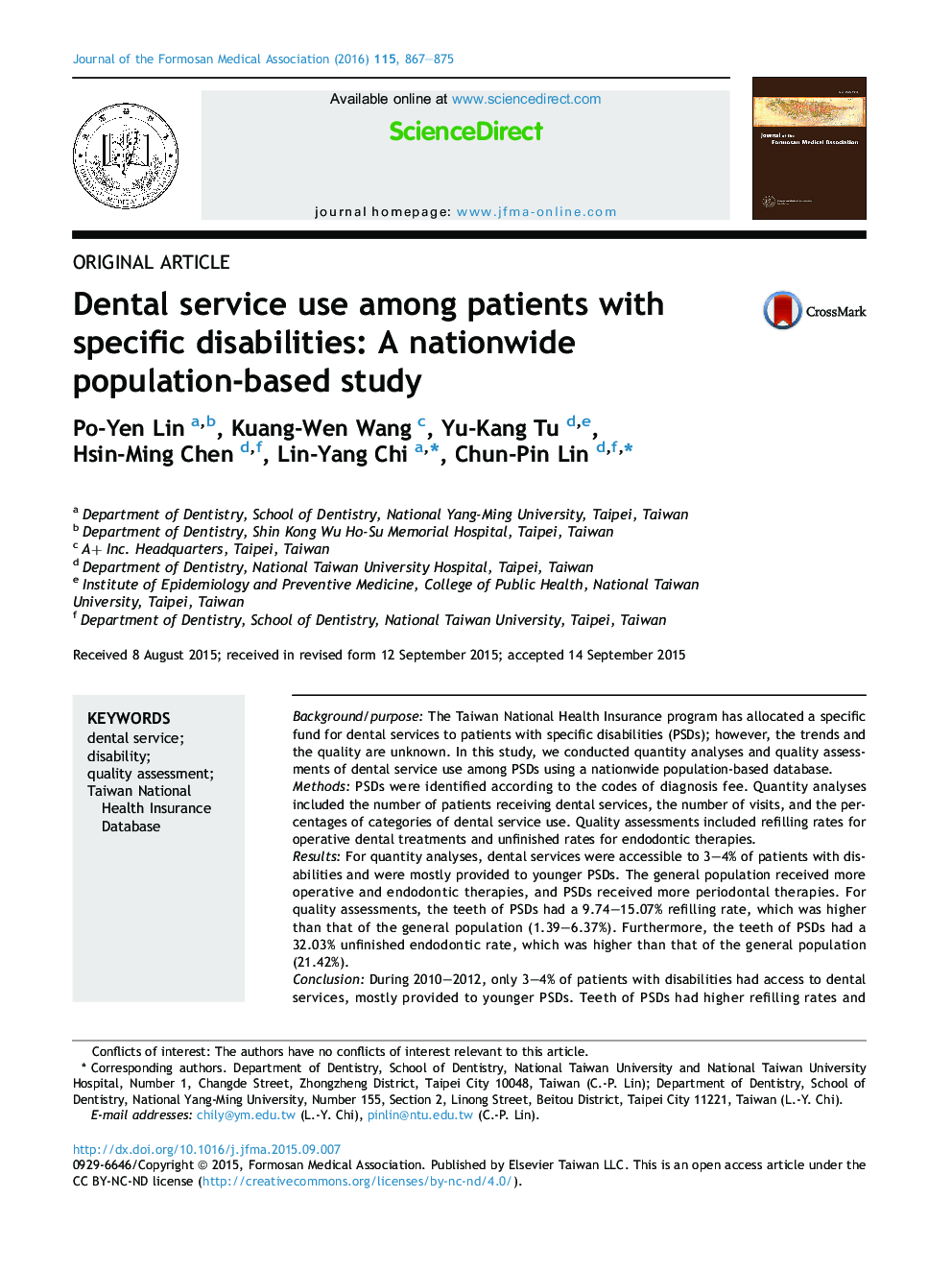| Article ID | Journal | Published Year | Pages | File Type |
|---|---|---|---|---|
| 5680070 | Journal of the Formosan Medical Association | 2016 | 9 Pages |
Background/purposeThe Taiwan National Health Insurance program has allocated a specific fund for dental services to patients with specific disabilities (PSDs); however, the trends and the quality are unknown. In this study, we conducted quantity analyses and quality assessments of dental service use among PSDs using a nationwide population-based database.MethodsPSDs were identified according to the codes of diagnosis fee. Quantity analyses included the number of patients receiving dental services, the number of visits, and the percentages of categories of dental service use. Quality assessments included refilling rates for operative dental treatments and unfinished rates for endodontic therapies.ResultsFor quantity analyses, dental services were accessible to 3-4% of patients with disabilities and were mostly provided to younger PSDs. The general population received more operative and endodontic therapies, and PSDs received more periodontal therapies. For quality assessments, the teeth of PSDs had a 9.74-15.07% refilling rate, which was higher than that of the general population (1.39-6.37%). Furthermore, the teeth of PSDs had a 32.03% unfinished endodontic rate, which was higher than that of the general population (21.42%).ConclusionDuring 2010-2012, only 3-4% of patients with disabilities had access to dental services, mostly provided to younger PSDs. Teeth of PSDs had higher refilling rates and unfinished endodontic sessions than the general population. We suggest that a more comprehensive dental care system is necessary to improve the quantity and quality of dental services, especially in middle-aged and older PSDs.
